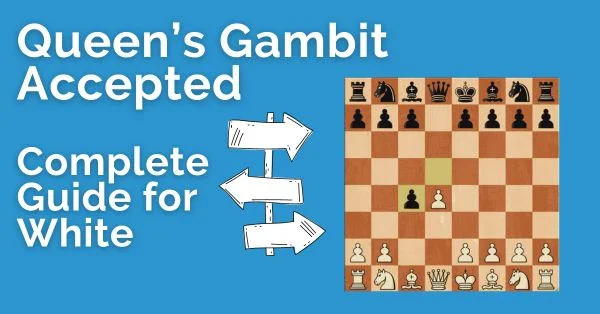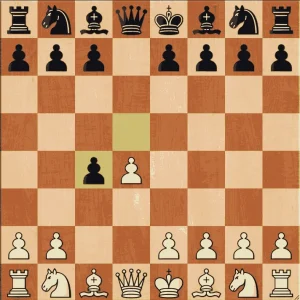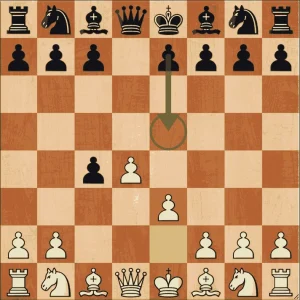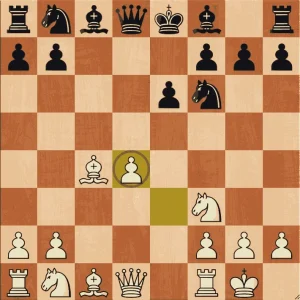Queen’s Gambit Accepted: Complete Guide for White

Queen’s Gambit Accepted (QGA) can be categorized under the postmodern category of openings. This is because it is a mixture of classical and hypermodern opening ideas.
Generally, in classical openings, the opening is played out in such a way that there are no major weaknesses created, whereas in Hypermodern openings you give up the center and fight for it after deploying your pieces to favorable squares.
So, in QGA by accepting the pawn black surrenders the center and plays in such a manner that generates no weaknesses.
In this article, we will take a look at the fundamentals of this opening, and the typical strategies for both white and black. Later we will take a brief look at some of the major variations.
Queen’s Gambit Accepted Fundamentals
After the initial moves d4 d5 c4 dxc4.

Let’s try to figure out what Black’s idea is from a strategic standpoint. To grasp the QGA, one must first understand the Queen’s Gambit Declined. Many of Black’s problems can be traced back to a lack of space advantage.
This is where the QGA variation comes into play. The basic idea is that getting free play for the pieces is a good thing, even if it means giving up the center for the moment. As in all forms of the Queen’s gambit, white is naturally eager to play e4.
Therefore, by removing the pawn barrier at d5 the struggle is of whether white can force a favorable e4 central advance or not.
Ideas and Strategies of Queen’s Gambit Accepted for White and Black
After the capture by Black, white should look at effective ways to regain the pawn back. But the goal should also be to prevent the liberating e5 break by black.

Therefore, with this in mind, the proactive move that we can consider is Nf3. Then we enter the Mainline of the QGA.
Another break that Black can rely upon is the c5 break and he can insert it early in the opening. At that moment, Black faces White with a decision.
Whether to play dxc5, the logic being that better development should triumph over slow play or to maintain the tension in the center, and in the process allow an isolated pawn structure with cxd4 exd4.
Queen’s Gambit Accepted Classical Variation
Let’s take a look at the Classical variation of the QGA,
Queen’s Gambit Accepted Mainline

Let’s take a look at the Mainline of the QGA:
The isolated pawn will determine the further course of the battle. Black’s long-term plan is to head to the endgame, where his superior pawn structure will play a key role. White will concentrate on an attack in the center and on the kingside.
Exchanges will always be welcome for Black.
Piece Placement
Black: Black’s strong point is d5, therefore he will try to place a knight on d5. Next, he will try to play on the queenside, mainly with the rook on the c file and a knight to support.
White: White has a very strong point on e5 and will try to place a knight there, if possible on c5 too. Subsequently, build up threats against the black king. f4-f5 can also be considered to support this plan.
Conclusion
In the QGA we see a permanent struggle between White’s and Black’s ideas. In some variation white can seize the initiative and hope for a slight edge in lines with the isolated d4 pawn.
There are some gambit lines that White can consider as well. However, that being said Black can avoid many tricky lines if he is a specialist in the QGA. Black has multiple plans to choose from in all the variations but he should be careful as some concessions have been made in the opening.
If being optimistic it can also be argued that lack can even play for a small advantage in some positions. Well, this is because for a club player or someone rated below the master level they usually won’t be facing Super grandmasters like Carlsen and Ding.
You might also like 5 Reasons Why You Shouldn’t Accept a Draw Offer, 1.d4 Gambits: 3 Chess Openings to Know as well as 10 Best Chess Games on Queen’s Gambit.
Model players to study the QGA
- Garry Kasparov
- Anatoly Karpov
- Vladimir Kramnik
- Vishy Anand
Model Games you can take a look at to get a good feel for the opening
- Steinitz – Janowski, London 1899
- Kransekow – Morozevich, New York 1997
- Botvinnik – Petrosian, Moscow 1936
FAQ
Is it OK to accept the Queen’s Gambit?
Yes, it is logical and okay to accept the ‘gambit’. Black can play in several different ways to play afterward.
What is the best response to Queen’s Gambit Accepted?
Following the mainline should be a good response to the QGA. White can either bank on better development or initiative from the opening.
Is it better to accept or decline the Queen’s Gambit?
Both declining and accepting the Queen’s Gambit are reasonable and well-measured ways of playing the opening.
Do grandmasters play Queen’s Gambit Accepted?
Yes, Grandmasters still play the QGA and it is a perfectly sound opening. It occasionally makes appearances even in Super GM games.
https://thechessworld.com/store/product/beat-queens-gambit-accepted-with-gm-jacek-stopa/










Comments: